
Principal Particulars

Length Of Vessel

LOA – ( Length OverAll ) – This is the maximum length of the ship between.
Forward Perpendicular (FP ): This is a vertical line passing through the point where the summer water line touches the stem of the ship.
Aft perpendicular (AP ) : This is a vertical line at the intersection of the designed load waterline and the after side of the rudder post, or the centerline of the rudder stock where there is no rudder post.
LBP – ( Length Between Perpendiculars ) –It is the Length between the forward and the aft perpendiculars of the ship.
Breadth

Breadth Extreme : Maximum Breadth of the ship
Breadth Moulded :The Maximum Breadth minus the thickness of the shell plating. Another term used for Breadth is Beam
Depth
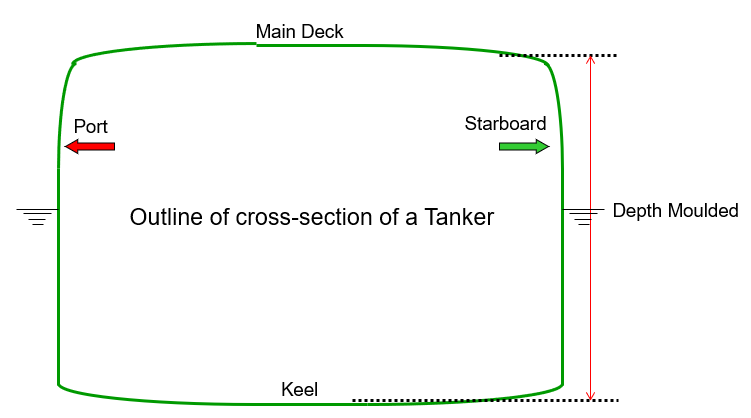
Depth Moulded :This is the vertical distance between the moulded base line and the top of the beams of the uppermost continuous deck measured at the side amidships.
In simple terms, it is the maximum depth of the ship on the side minus the thickness of plating
Sheer
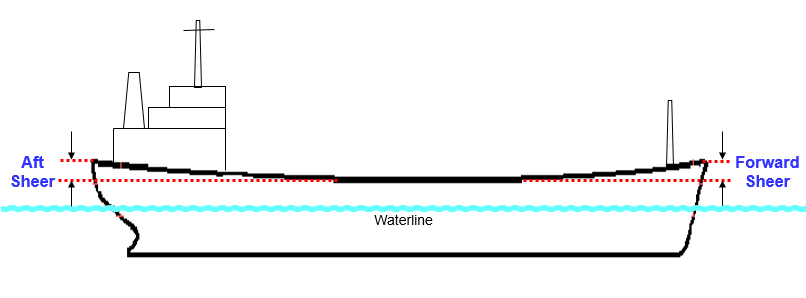
Sheer : This is the curvature given to the decks in the longitudinal direction, and is measured at any point by the difference between the height at side at that point and the height at side amidships. The amount of sheer forward is often twice the sheer aft.
Flare
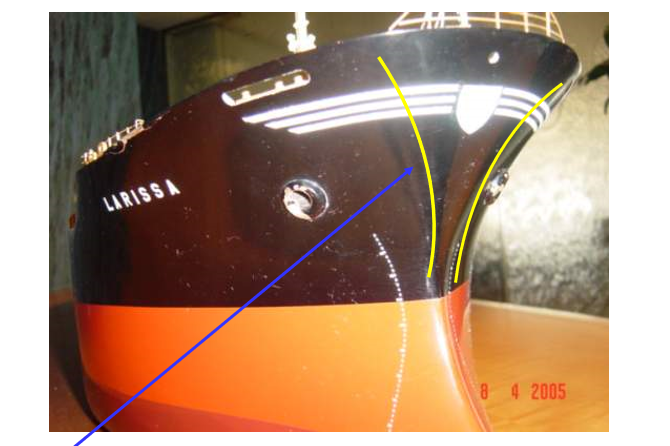
Flare : This is the outward curvature of the hull in the fore part of the ship
Shipside and Bottom
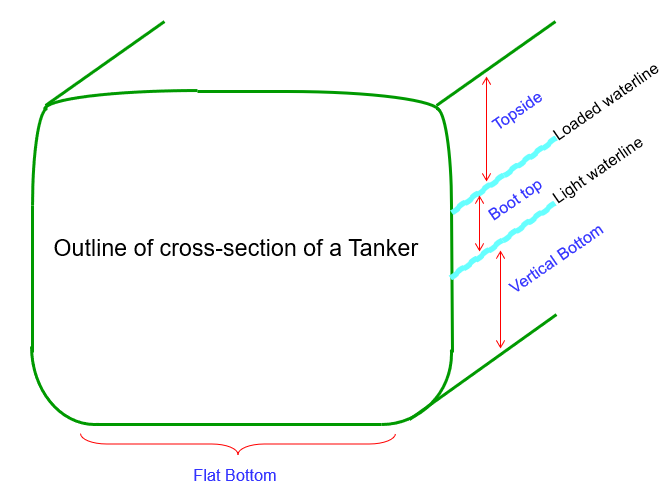
Some Misc terms
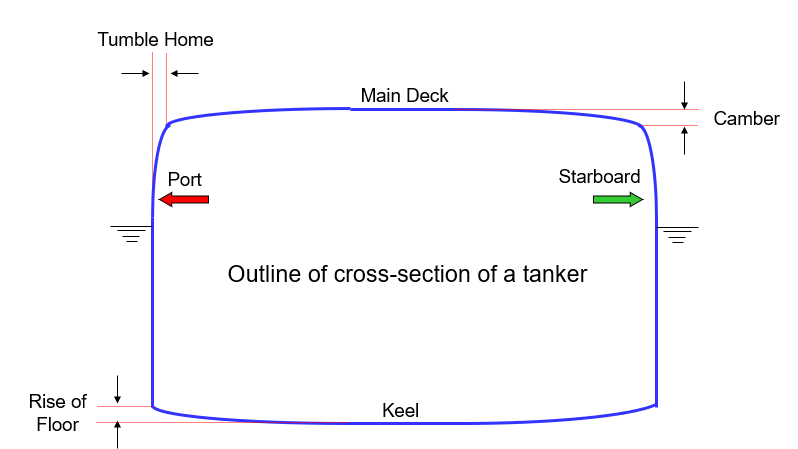
Camber or round of beam : This is the transverse curvature given to the decks, and is measured by the difference between the heights of the deck at side and centre. The amount of camber amidships is often one-fiftieth of the beam of the ship.
Tumble Home : This is the amount by which the shipside falls in from the vertical line.
Rise of Floor : This is the amount by which the line of the outer bottom plating amidships rises above the horizontal line.
Bilge Keel
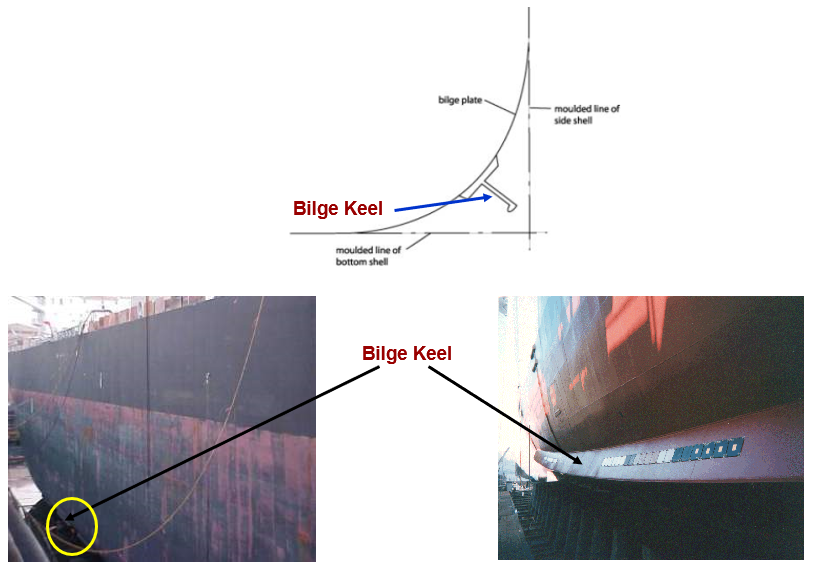
Bilge Keel:
The prime function of Bilge Keel is to help damp the rolling motion of the vessel. Other relatively minor advantages of the bilge keel are protection for the bilge on grounding, and increased longitudinal strength at the bilge.
Parallel Body Length
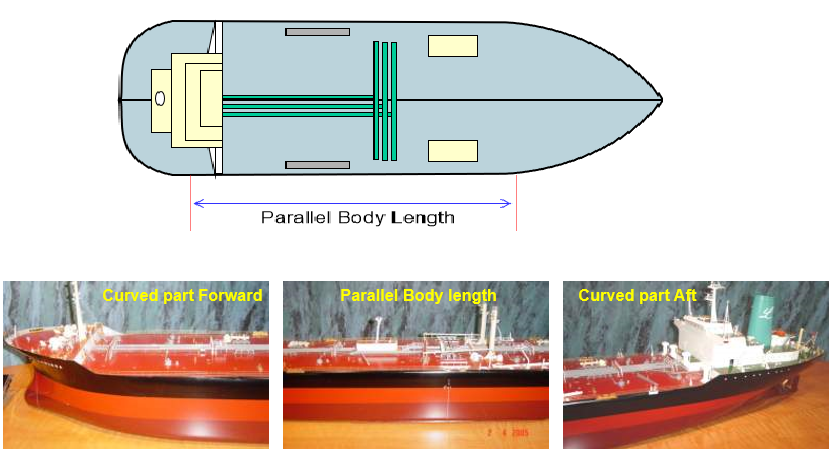
- The sides of the ship are not straight throughout the length of the ship.
- They curve towards the forward and aft ends of the ship
- The length of the ship along which the sides of the ship remain straight and parallel to each other, for a particular draft, is called the Parallel Body Length for that draft.
- The Parallel Body Length varies with the draft of the ship due to the ships form.
- As the Draft reduces the Parallel Body length also reduces.

The Parallel Body length is used to determine the suitability of a ship for a particular Berth
Freeboard
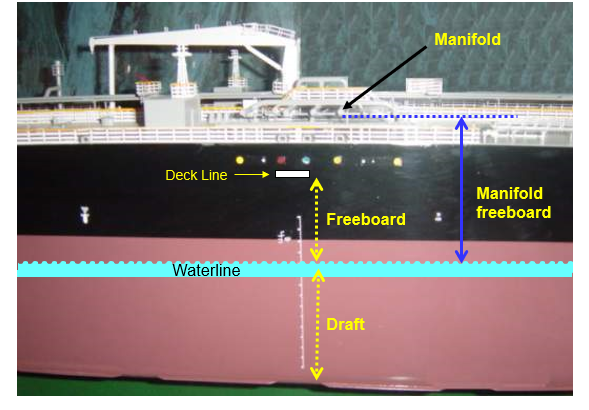
Deck Line – This is usually marked at the point where the upper edge of the freeboard deck would meet the shipside.
Freeboard : For any particular draft, the Freeboard is the vertical distance measured amidships from the upper edge of the deck line to the waterline
The height of the manifold above the waterline at a particular draft is loosely termed as the manifold freeboard at that draft
Plimsoll Mark
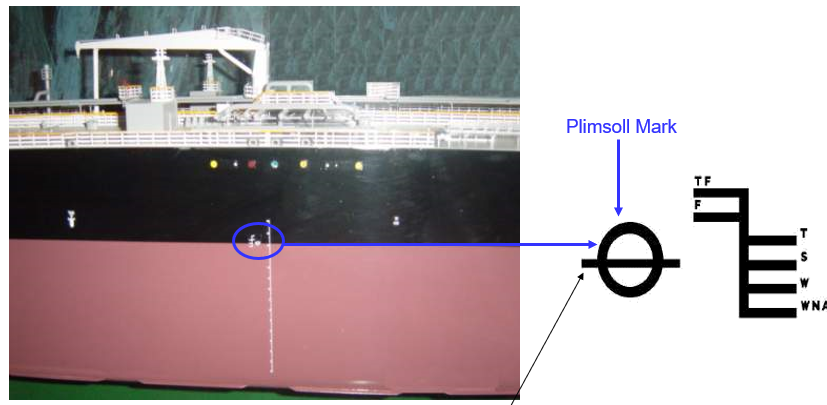
- The upper edge of this line indicates the summer loadline
- Under the Load line rules, the applicable loadline should never be submerged.
Air Draft
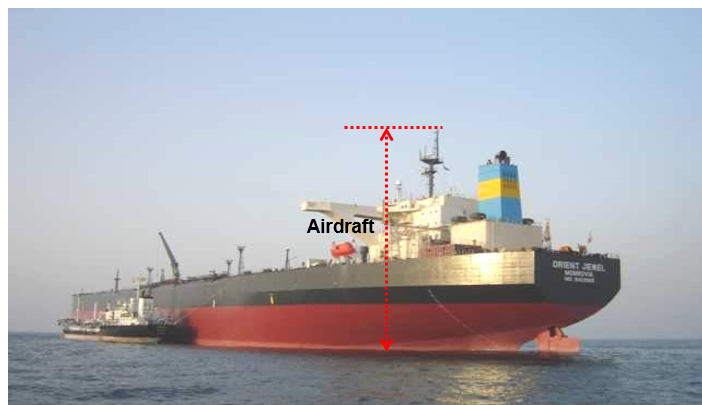
Airdraft -This is the vertical distance from the sea level to the Highest point on the ship
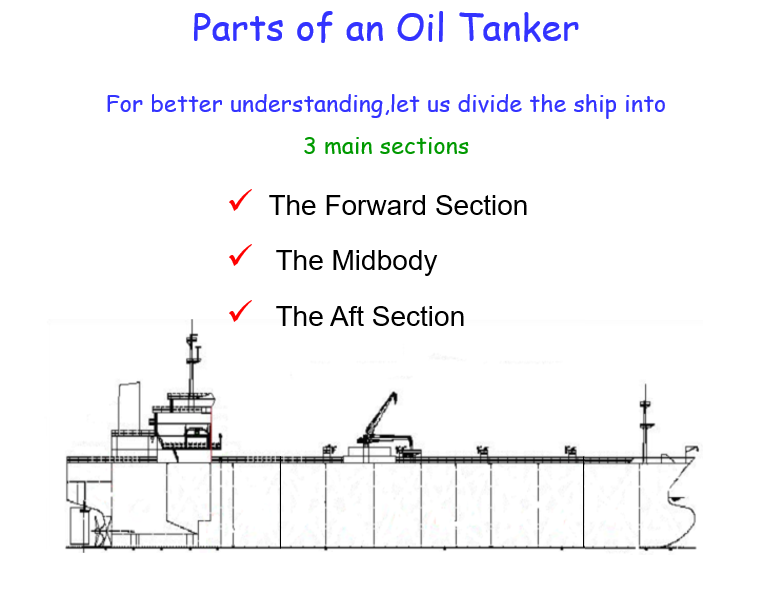
Forward Section
Bulbous Bow
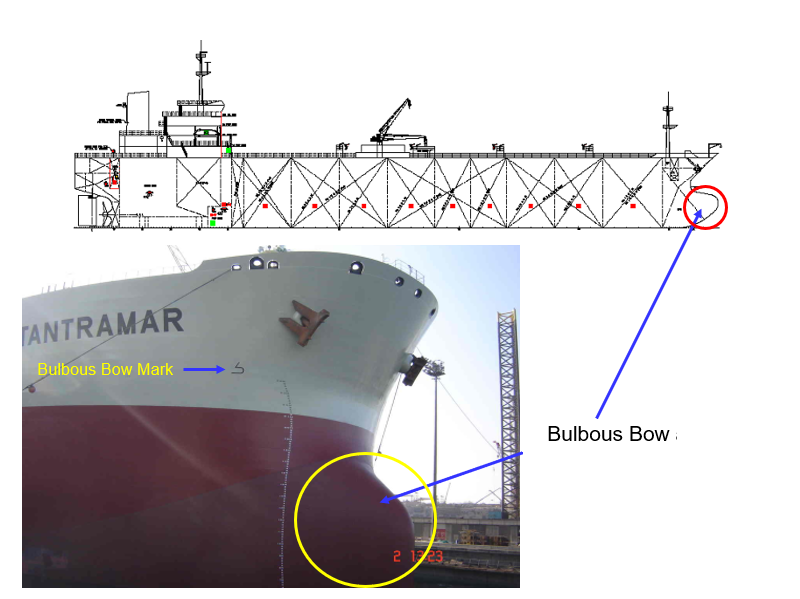
The Bulbous Bow assists in reducing resistance of water to the movement of the ship
The Fore Castle Area Or The Bow
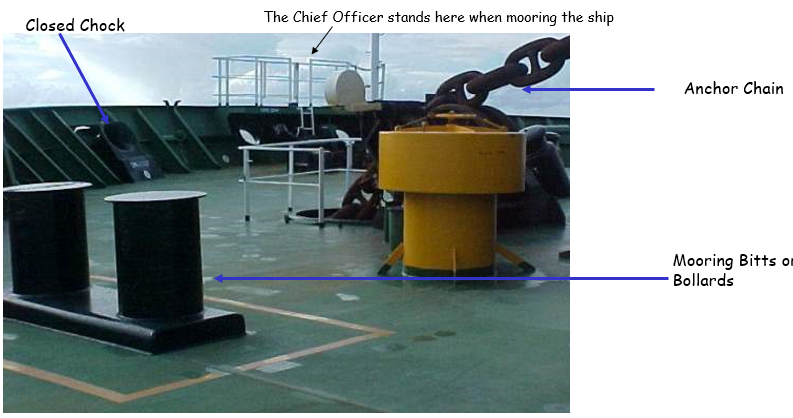
This is the Forecastle or fore or forward part of the Ship.The vessel is anchored and Moored from this location
A Typical Deck Mooring Winch
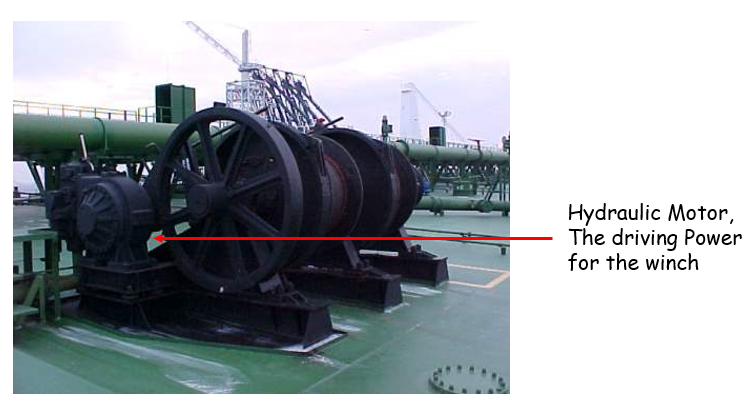
Bow chain stopper (Tongue Type)
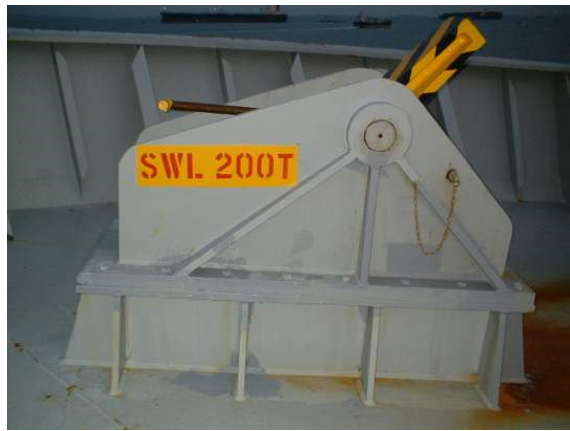
Installed on the Foc’sle deck ,Primarily used for making fast at a SBM . Also utilized as part of the Emergency Towing Apparatus
The Fore Castle Area
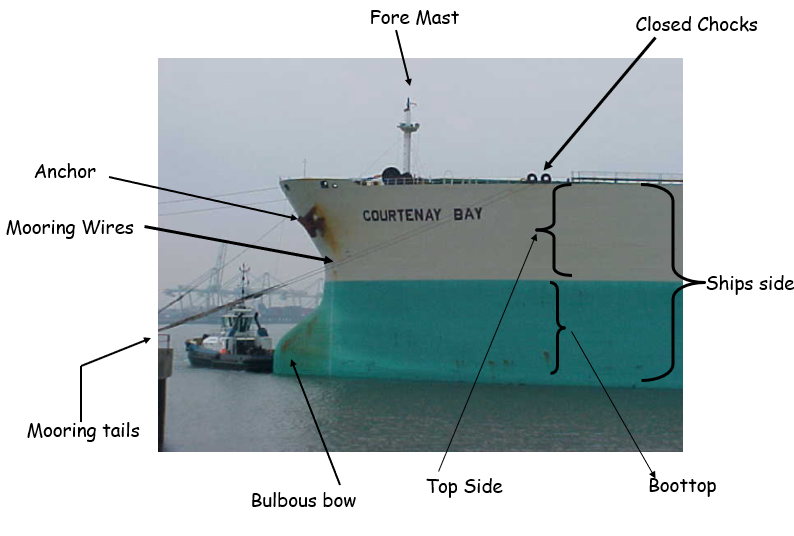
Profile view of fwd section
Fwd view
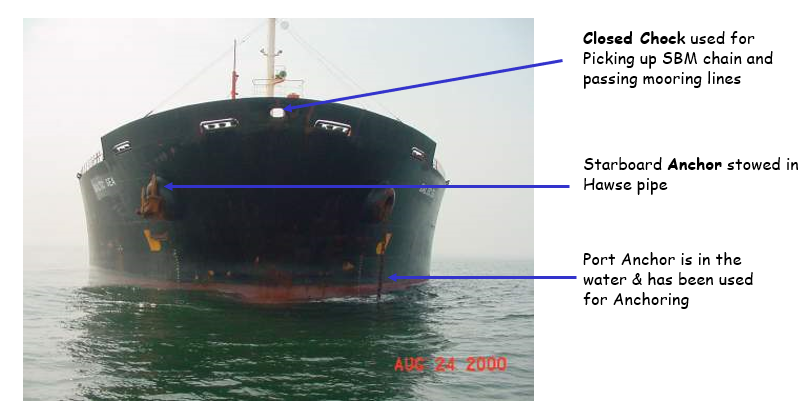
View of tanker from fwd
Hydraulic mooring Winch with Windlass
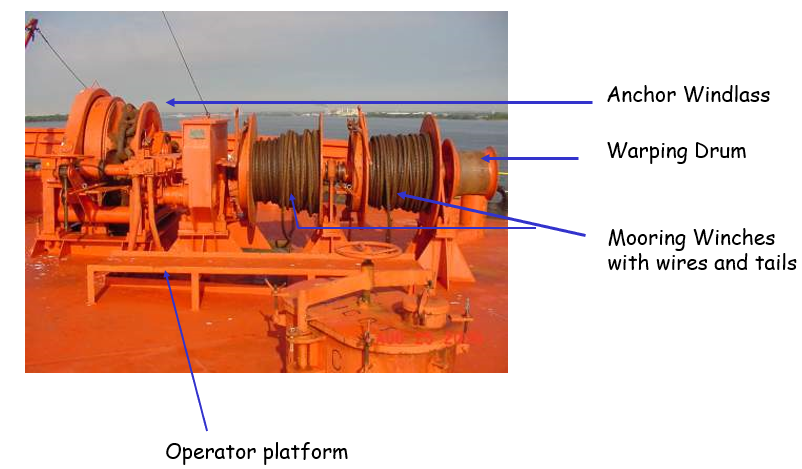
Hyd mooring winch at forecastle deck
The Midbody
Ship Side, Midship Area
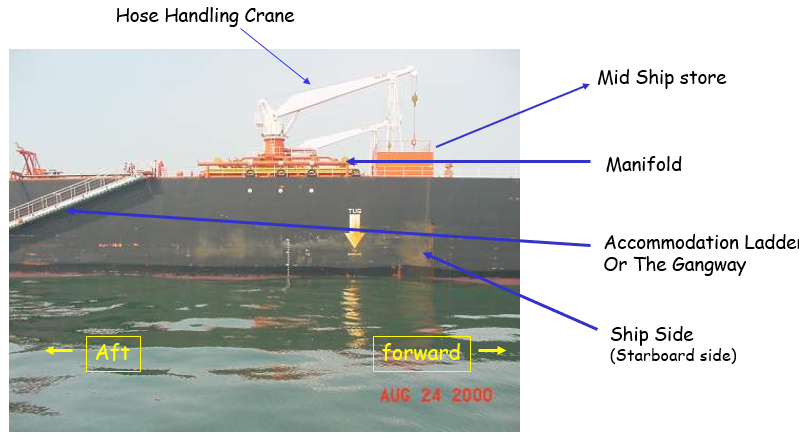
Helicopter landing area
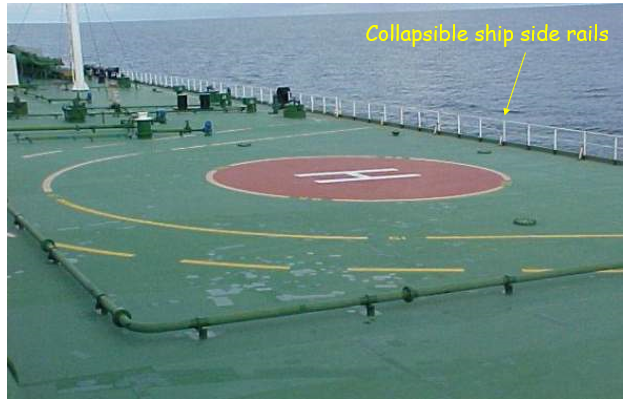
Nowadays, Helicopters are extensively used (for Pilot embarking, Crew changes and Stores / supplies).
Main deck of a vessel
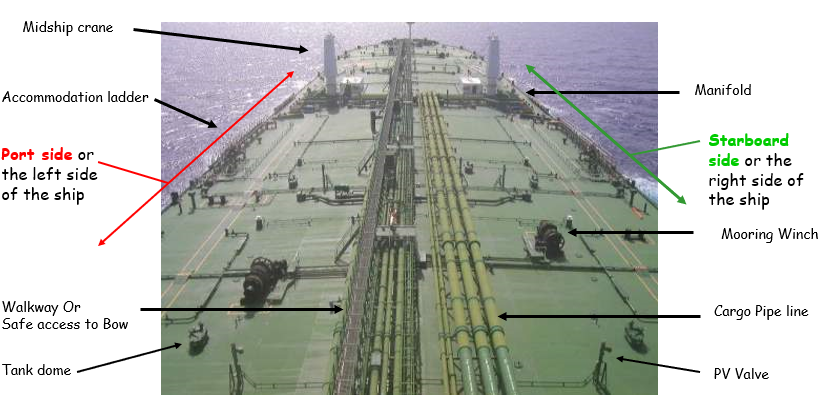
Accommodation Ladder Or Gangway
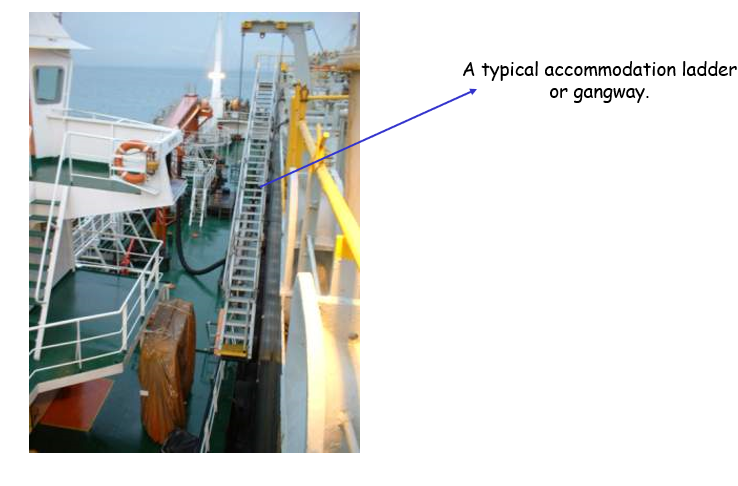
In this picture , the gangway is used for transferring people (during a bunkering operation) between two ships.
This Gangway is fixed to the ship and can be only used if the jetty or other ship is within its range.
The Ship’s Manifold

Manifold Reducers
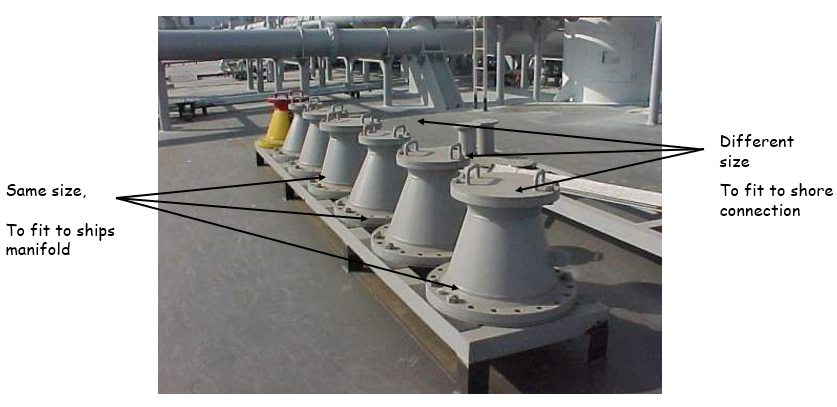
These can be fitted on the manifold, so as to make the same manifold available for different size of shore connections
Heating Coil
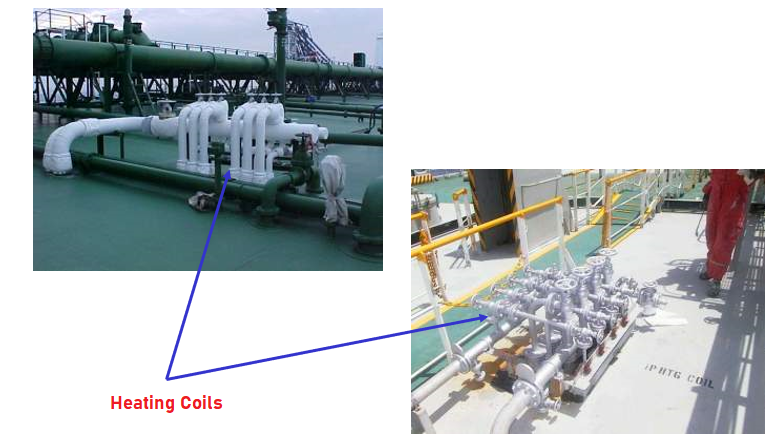
Steam runs through these coils which in turn heats up the cargo in the tank
Cargo Tank
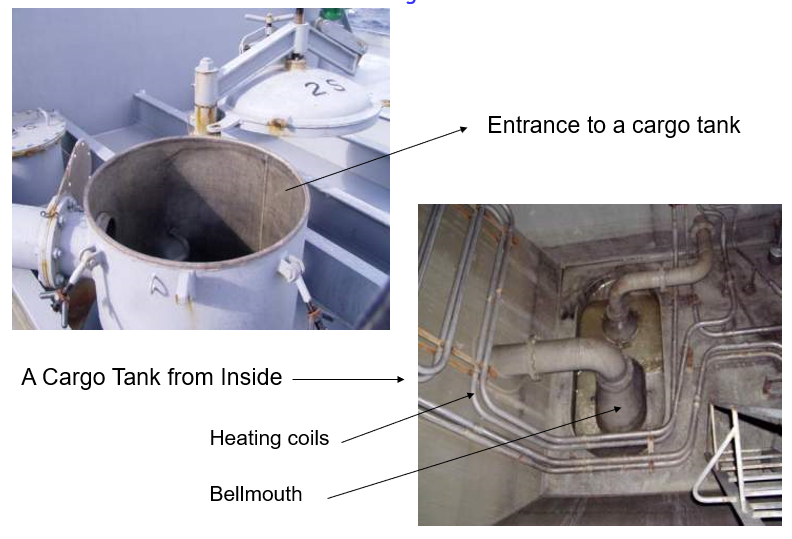
Ballast Tank
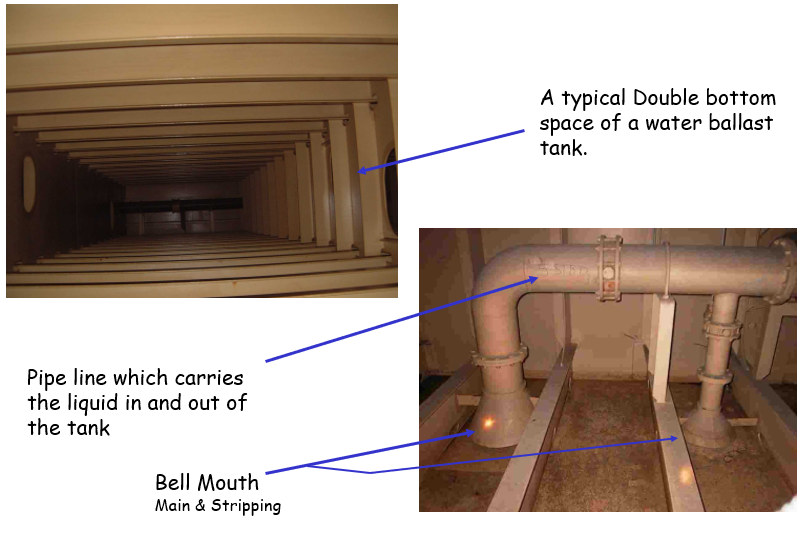
The Aft
The Poop deck

Also called as Stern
The Poop deck seen from outside
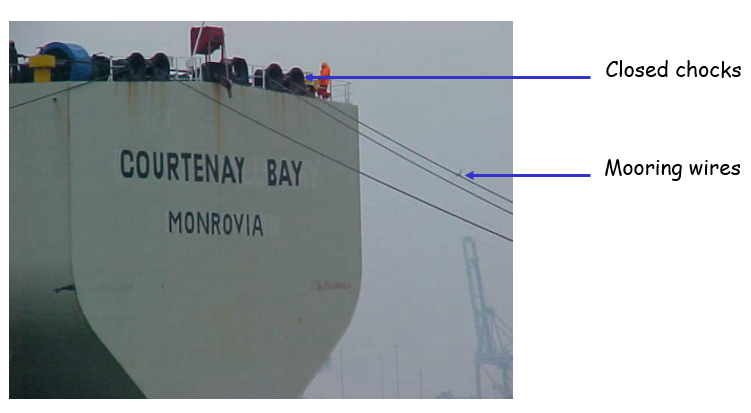
Also called as transom
Lifeboat Launching Area
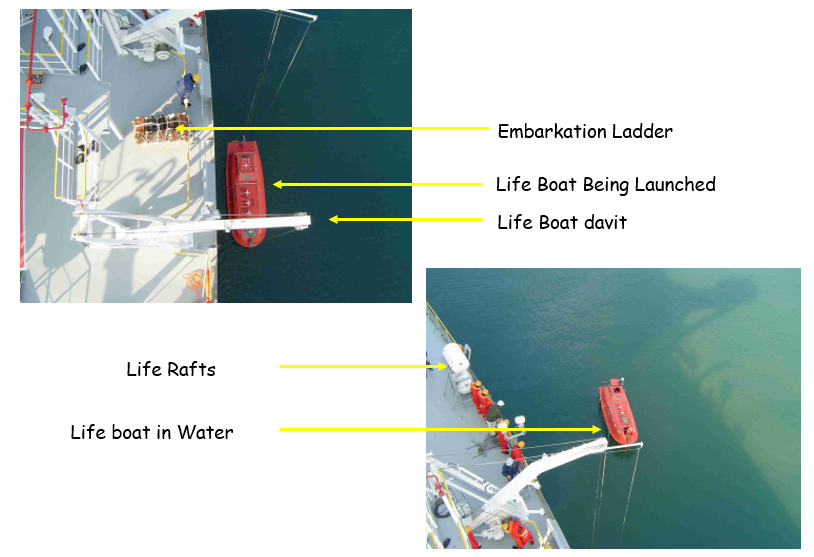
Accommodation Block
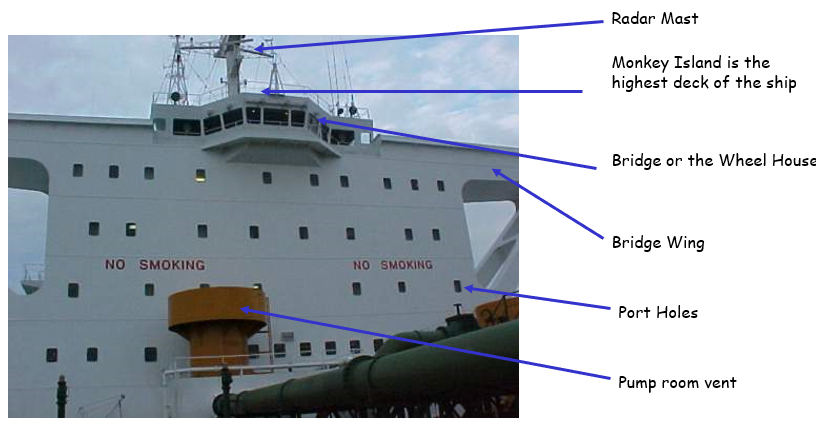
Navigation Bridge
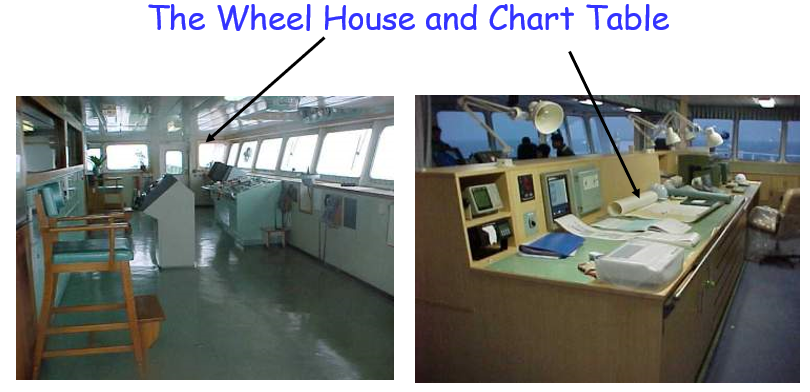
The ship is controlled or Navigated from this location. While the vessel is at Sea, this location is always manned.
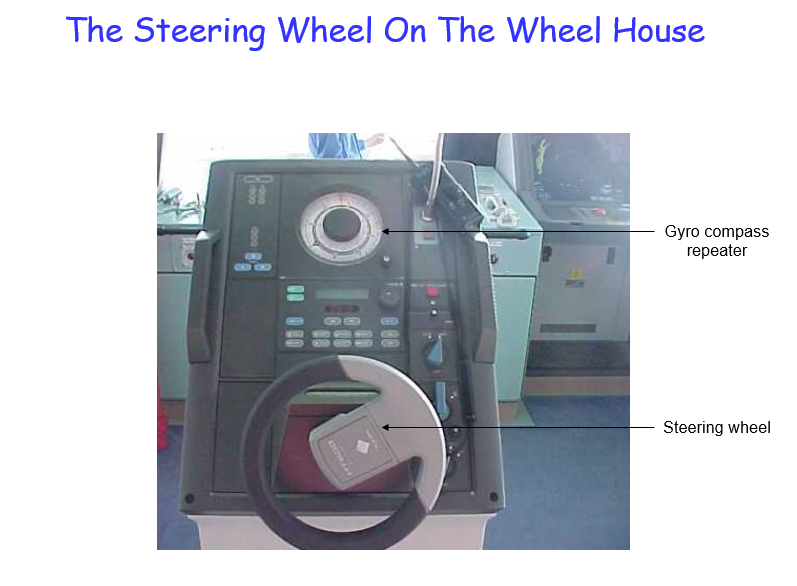
Vessel is steered from here.
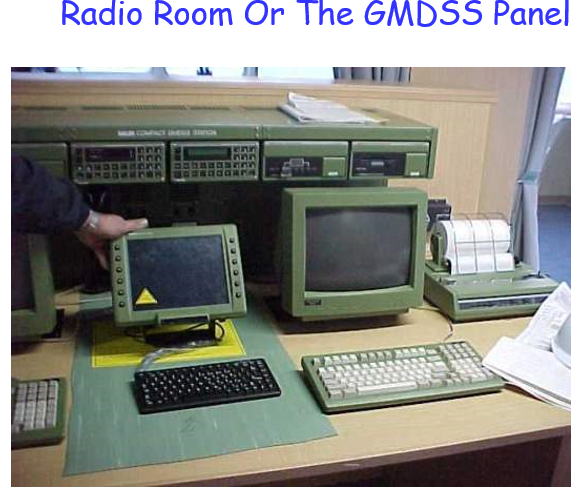
Communication of the ship is carried out from here.
Aft Main mast
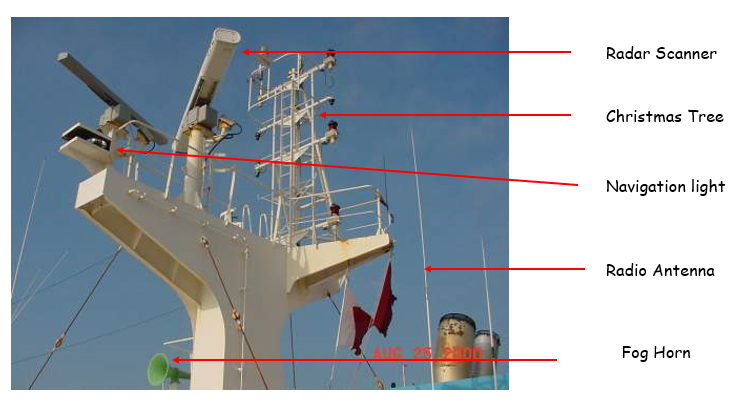
Cargo control room
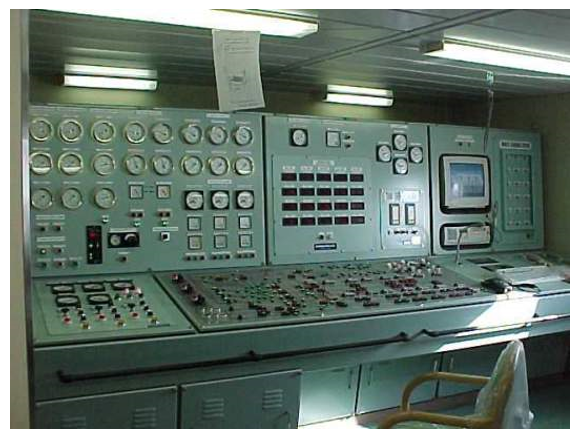
Pumps and Valve operations for Cargo And Ballast are controlled from CCR
Crew cabin & mess room
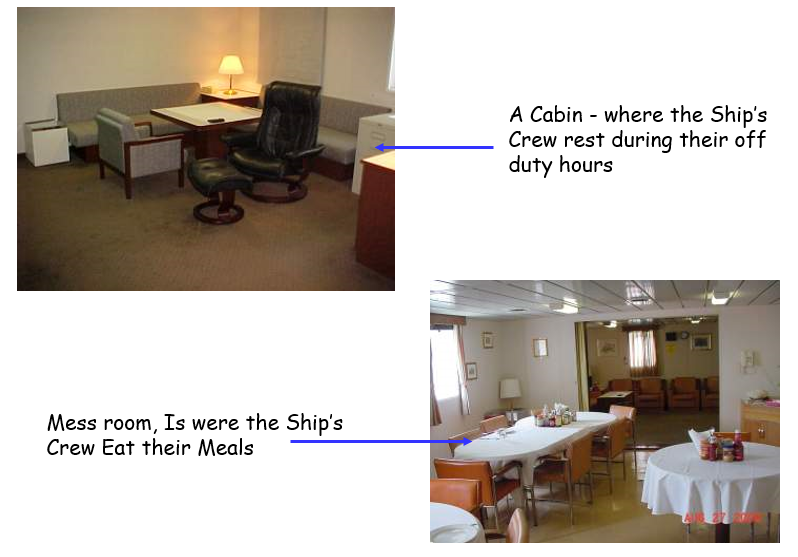
Galley & Smoke room
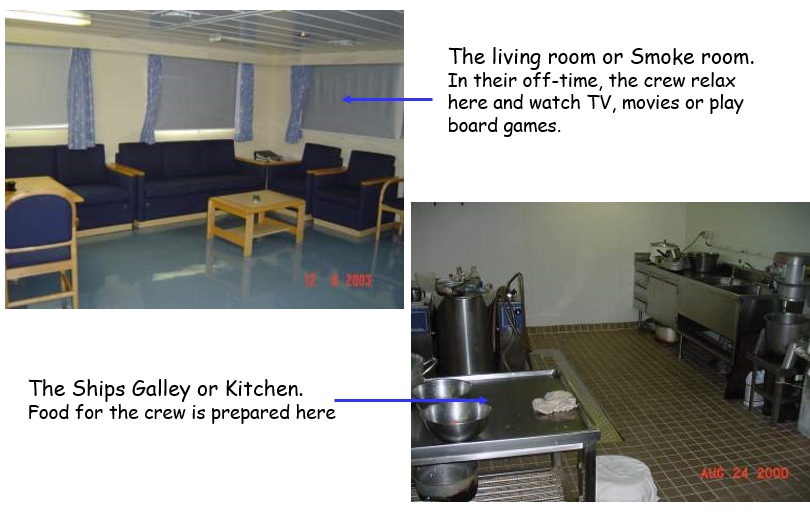
Cargo Pumps in Pumproom
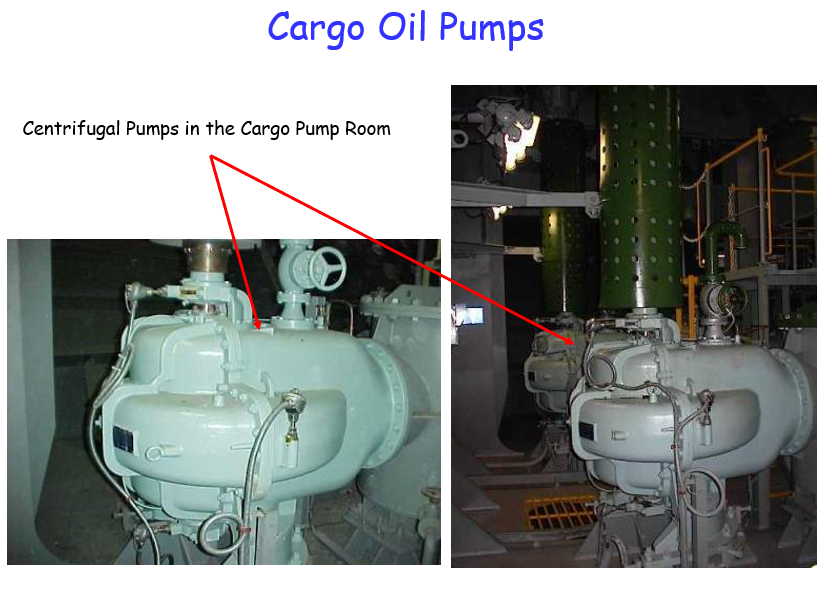
One thought on “Tanker Various Parts”